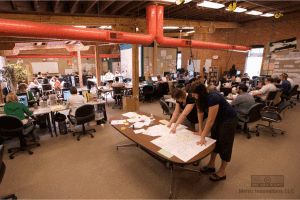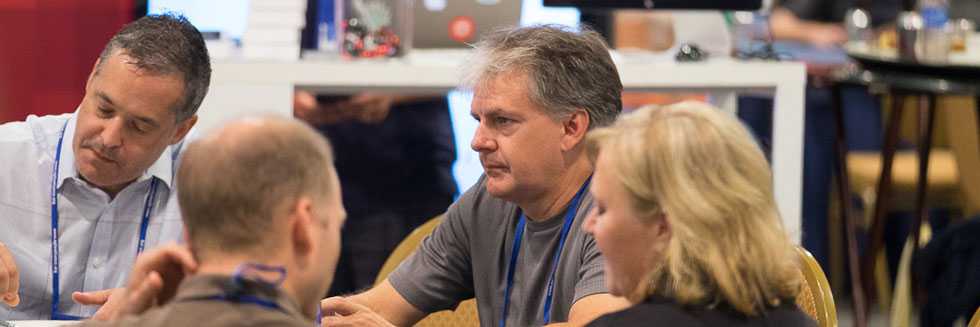Every IT organization says “We want to have a great culture.” I’ll bet yours is no different. We all know that a wonderful culture usually leads to highly-engaged team members, better product quality, happier customers, and additional revenues.
After working as an agile coach with more than 30 teams across six software development organizations over the last seven years, I have been fortunate enough to encounter a variety of cultures, most of which were positive. One employer had 36 employees. One had 80,000 spread across five continents. I’ve been in the trenches for the most part, listening, learning, facilitating, and coaching scrum, kan-ban, and scrum-ban teams through the SDLC mud.
In my role helping organizations move from Waterfall to something more Agile, I have witnessed plenty of stress and dealt with a few interpersonal relationships that certainly lacked the “happiness” factor. Some of my teammates faced considerable challenges (external and internal) that made it hard for them to have fun at work.
Much has been written lately about the role management plays in creating and maintaining a joyful culture. Some firms (like my current employer) take the bull by the horns and spell it out right up front in their mission statement. One of the four primary “pillars” at Commonwealth Financial Network is “Fun.” It’s right up there with “Service,” “Profitability,” and “Individual Development.”
Granted, “Fun” is listed fourth, not first, but when great service is what really sets your firm apart, that makes sense.
In any case, the message is clear. If you are going to work hard, create value for your firm, and create happy customers, you should try to have some fun in the process. In addition, Commonwealth has devoted considerable effort to “Commonwealth Connect,” a company-wide campaign to bring new friends together from all parts of the company. The result is a fabulous company culture.
Rich Sheridan of Menlo Creations is going to pay a visit to Boston on March 3rd and share his thoughts on the “Joy” that makes his Ann Arbor-based software development firm special. I am seriously looking forward to hearing Rich’s message, but as the date has drawn near, I found myself pondering Rich, his book, and his message. I ended up asking myself: What role does the average team member play in creating a joyful workplace?
Reflecting on the agile transformations I have witnessed firsthand over the past seven years led me to this: We do need management to take the lead in creating a joyful workplace but the “heavy lifting” is performed by people paying earnest attention to the little things and creating the micro-possibilities that help each team, every day of every sprint.
Did you get to the morning stand-up a couple of minutes early so you can exchange a few pleasantries with a teammate? Were you aware that she worked late yesterday on a particularly difficult bug fix? Did you say something to her to express your appreciation? Being situationally aware and expressing gratitude to a teammate early in the day is an effective joy-producing habit.
During the stand-up, did you share enough details on your work in progress so that the others on the team know exactly what and how you are doing in helping to deliver the sprint commitment? Did you make sure to avoid sounding vague and opaque (as if this sharing business is a little beneath you)? Don’t just stand and deliver. Smile and deliver.
How about that backlog refinement session earlier this week? If you are a Product Owner, did you distribute the user stories ahead of time? If you are a developer or QA engineer, were you prepared to discuss them? Were you fully engaged in the conversation with the Product Owner? He is under considerable scrutiny from the business to get that big feature delivered – did you help foster a discussion that gave him an accurate idea of what it will take to deliver?
Did you encourage your more reticent teammates to participate in the conversation? Let your guard down and make sure your team plays planning poker. Teams need to laugh and that is always good for a few laughs. Wha…? You’re at a ‘3’? Umm, I’m holding a ‘13’ here! Were you proactive in identifying potential dependencies? Discovering dependencies after sprint planning is over creates stress and certainly erodes joy.
During your team’s last retrospective, did you keep it positive? Did you help make sure it didn’t become a pity party? Did you communicate the notion that you are willing to try something new? Did you deliver “Kudos” or throw a virtual “bouquet” in the direction of a teammate who went above and beyond to help deliver the sprint commitment? Too often we forget to express appreciation and admiration to our colleagues, but in my experience, the “Kudos and bouquets” aspect of the retrospective is nearly as important as the “Okay, Let’s Try This” piece. Openly recognizing your teammates for their excellence will put almost as much joy in their hearts as it will in yours.
We all know that Agile can be daunting for any team still mired in transition because Agile tends to reveal everything. Making the effort to help shepherd your teammates through the rough patch will go a long way to creating some joy. During the sprint, did you help or encourage the junior developer who was stuck? Did you help split that 13-point story that was stuck in “To Do?” Have you tried pair programming? Did you go out of your way to learn something new from a teammate or share something useful with a teammate?
Having a fun team is more than periodically pulling up a laugh-out-loud video clip from YouTube in order to elicit a few guffaws from your teammates (although that certainly won’t hurt). Take the time to create a team culture that is real, organic, and sturdy – something that will survive the hard knocks that an agile transformation will throw at your team.
I’m certainly looking forward to meeting Rich Sheridan and learning more about what he has done to foster a joyful workplace at Menlo Creations. I suspect that for most IT organizations, “joy” is not a naturally-occurring phenomenon. But luckily, everyone can make sure it is cultivated.

Chris Meredith is an Agile Project Manager at Commonwealth Financial Network. Find him on LinkedIn.



![[Case Study] Lessons from descaling 25 Scrum teams](https://www.agilealliance.org/wp-content/uploads/2024/12/descaling-teams-1200x630-1-150x150.jpg)



![[Case Study] Lessons from descaling 25 Scrum teams](https://www.agilealliance.org/wp-content/uploads/2024/12/descaling-teams-1200x630-1-300x158.jpg)

